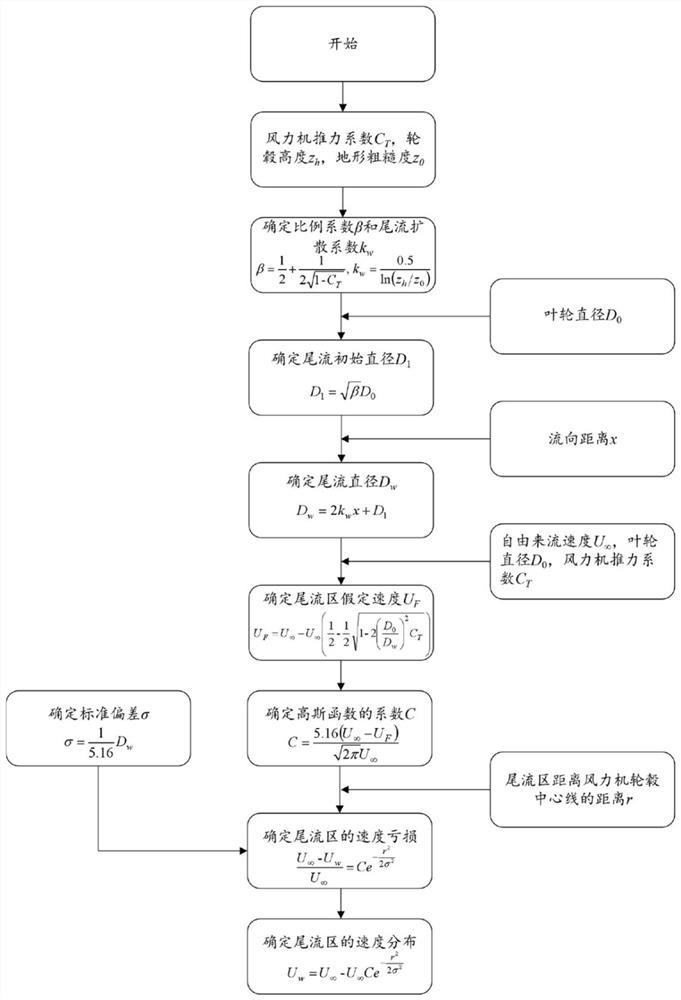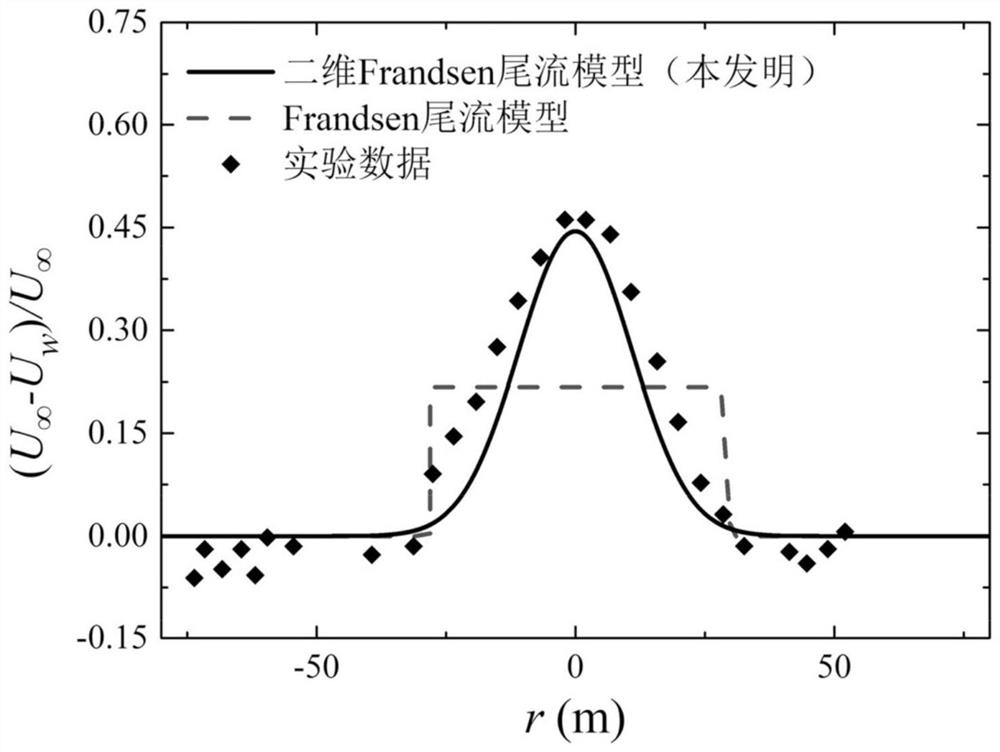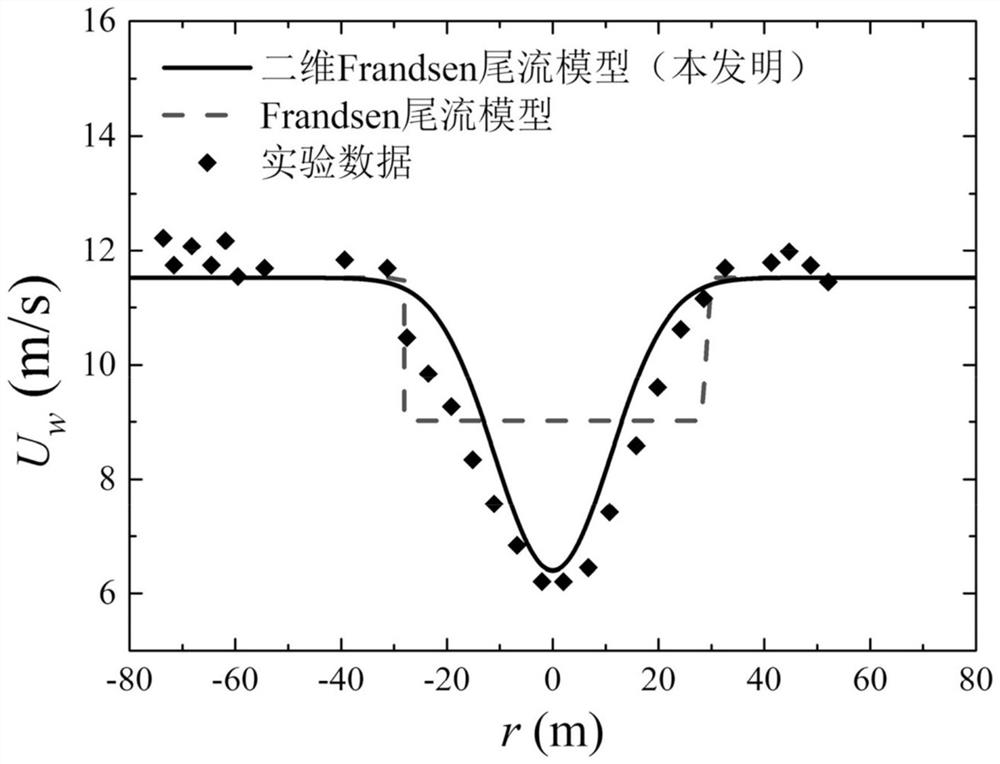Method for calculating wind turbine wake flow by using two-dimensional Frandsen wake flow model
A wake model and wind turbine technology, applied in design optimization/simulation, instrumentation, electrical digital data processing, etc., can solve the problems of wind turbine wake deviation and low wake prediction accuracy, achieve accurate evaluation and improve prediction accuracy Effect
- Summary
- Abstract
- Description
- Claims
- Application Information
AI Technical Summary
Problems solved by technology
Method used
Image
Examples
Embodiment Construction
[0049] A method of calculating a wind turbine using a two-dimensional Frandsen lathe model, the specific steps are as follows:
[0050] 1) Extract the thrust coefficient of wind turbine C T , Hub height z h , Terrain roughness z 0
[0051] Extract the thrust coefficient of wind turbine according to the factory parameters of the wind turbine T And hub height z h Determine the corresponding terrain roughness z based on the topographic form (such as grass, hills, hills, mountains, etc.) where the wind turbines are located. 0 .
[0052] 2) Determine the proportional coefficient β and the lathe diffusion coefficient K w
[0053] According to the formula (1) and formula (2), the proportional coefficient β and the latch diffusion coefficient k w . Among them, the proportional coefficient β and the thrust coefficient of the wind turbine C T Related; Tail current diffusion coefficient k w Hub height z with wind turbine h Terrain roughness z 0 Related to the increase rate of the tail flow...
PUM
 Login to View More
Login to View More Abstract
Description
Claims
Application Information
 Login to View More
Login to View More - R&D
- Intellectual Property
- Life Sciences
- Materials
- Tech Scout
- Unparalleled Data Quality
- Higher Quality Content
- 60% Fewer Hallucinations
Browse by: Latest US Patents, China's latest patents, Technical Efficacy Thesaurus, Application Domain, Technology Topic, Popular Technical Reports.
© 2025 PatSnap. All rights reserved.Legal|Privacy policy|Modern Slavery Act Transparency Statement|Sitemap|About US| Contact US: help@patsnap.com



